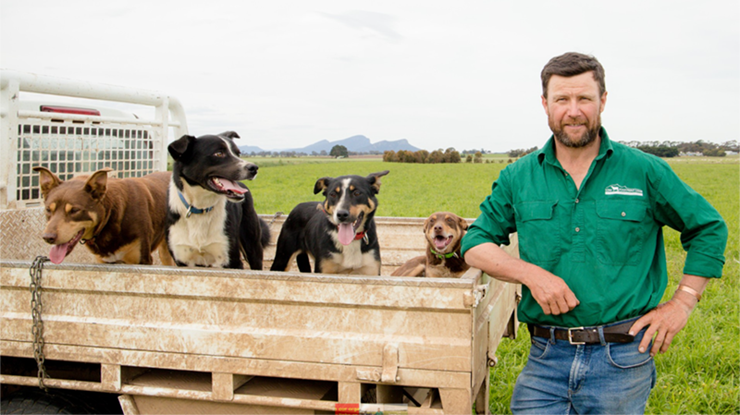 Matt Kelly has been refining his shedding flock for more than a decade.
Matt Kelly has been refining his shedding flock for more than a decade.
Efficiency rides on sheep’s back
Western Victorian producer Matt Kelly’s shift to shedding sheep in the early 2000s was born out of necessity, when getting his flock from heavily timbered country to the shearing shed each year was no easy feat.
“It was hard to get a clean muster in the trees, so whatever treatment we gave them may have only covered 85%–95% of the flock – it just wasn’t an efficient system.
“Shedding sheep were the only way I could successfully run that operation.”
Having already built up a significant Coopworth flock, starting from scratch wasn’t an option. Instead, Matt bought some shedding sheep to add to his existing flock, and bred the wool off as quickly as he could.
The primary focus of the early years of Matt’s breeding program was to develop an easy-care shedding sheep, so he selected heavily for shedding.
After building up a shedding flock, Matt turned his focus to placing selection pressures on traits such as weaning and growth rates, muscle and fat.
“Our maternal composite flock has more productive genes and has made significant progress, with 50 years of performance recording,” Matt said.
“Our focus is on understanding how we can fast-track the genetic transfer of those productive genes into our shedding sheep.”
Decades of data
Matt is one of the producers who has spent years collecting data from his flock for an MLA-supported project, and now has three generations worth of data for the researchers to work with.
This information is being used as part of ongoing research to develop a phenotyping protocol and breeding values that describe an animal’s ability to shed their fleece.
“We’re trying to introduce the maternal composite with the least amount of wool that has the highest genetic merit, so we can then bring across those highly productive genes into our shedding sheep and increase the genetic traits we want them in without bringing too much wool,” Matt said
If successful in developing a breeding value for this trait, Matt believes a clearer path to high-performing shedding sheep will be popular for those wanting an easy-care flock.
“There are a lot of producers looking to reduce costs by going to shedding sheep, so they’re going to need the same breeding value to transfer those genes across into their woolly sheep.”
While the ongoing research is promising for the ability to select on animal’s genetic merit for its ability to shed wool, there is still a value gap behind maternal composite breeds.
“At this moment, our sheep are about $15–$25 behind leading maternal composites from a production perspective, but in our operation we’re making those savings in labour, chemicals and risk,” Matt said.
“Our main goal is to produce sheep that need humans less, and function well without constant monitoring and chemical intervention.”
The ongoing research holds significant potential in closing that gap and improving the productivity of shedding sheep, with number of lambs, weaning and growth rates, muscle and fat all being priority traits for Matt.
“We’re using all the information we can get our hands on to push production as hard as we can. Low input, high output is the ultimate goal.”



